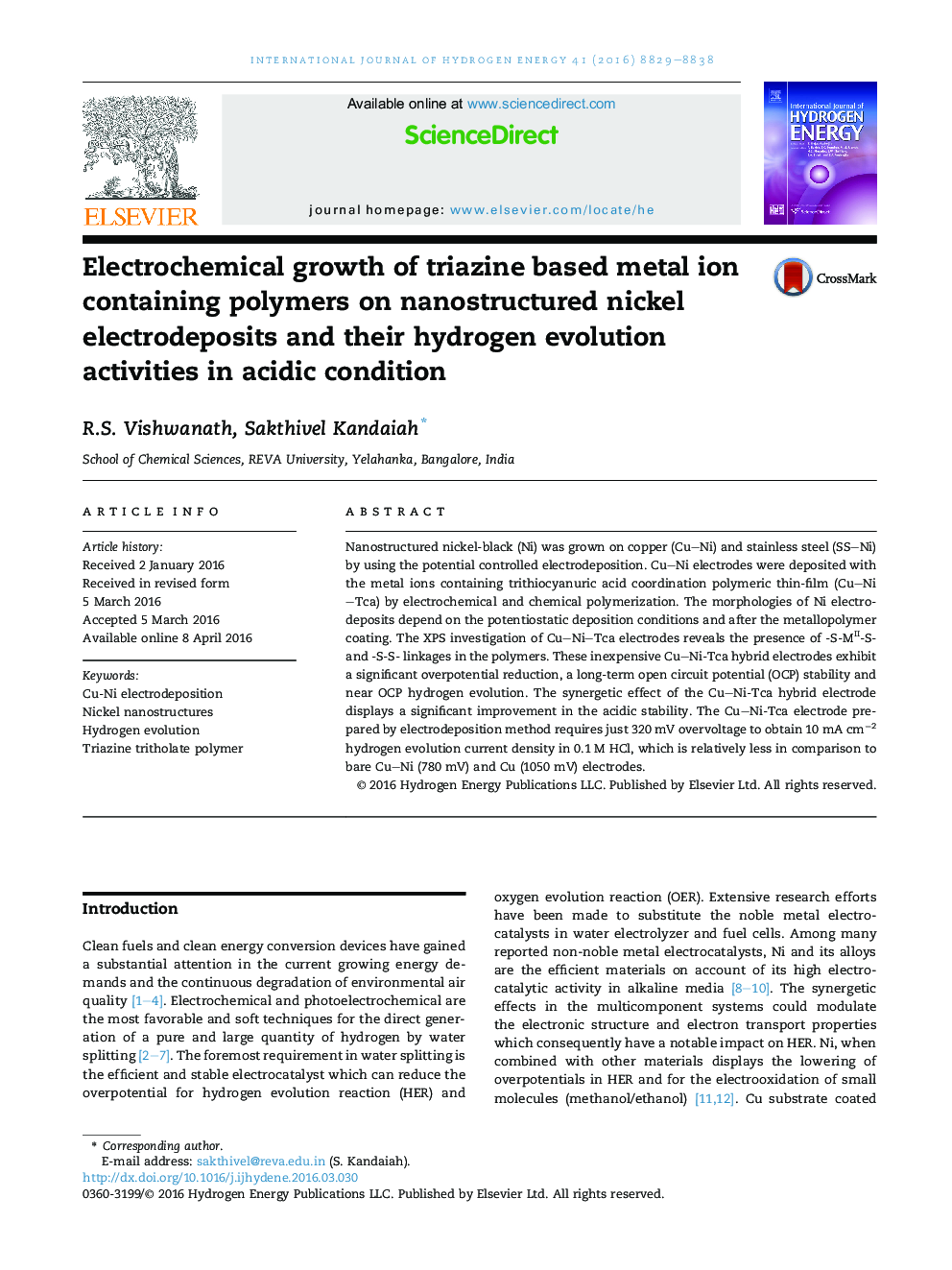| Article ID | Journal | Published Year | Pages | File Type |
|---|---|---|---|---|
| 1269899 | International Journal of Hydrogen Energy | 2016 | 10 Pages |
•A facile route for preparation of metallo-polymeric hybrid electrodes (Cu–Ni-Tca).•Long-term OCP stability and near OCP HER in acidic media.•It requires 320 mV overvoltage for HER compared to Cu–Ni (780 mV) in 0.1 M HCl.
Nanostructured nickel-black (Ni) was grown on copper (Cu–Ni) and stainless steel (SS–Ni) by using the potential controlled electrodeposition. Cu–Ni electrodes were deposited with the metal ions containing trithiocyanuric acid coordination polymeric thin-film (Cu–Ni–Tca) by electrochemical and chemical polymerization. The morphologies of Ni electrodeposits depend on the potentiostatic deposition conditions and after the metallopolymer coating. The XPS investigation of Cu–Ni–Tca electrodes reveals the presence of -S-MII-S- and -S-S- linkages in the polymers. These inexpensive Cu–Ni-Tca hybrid electrodes exhibit a significant overpotential reduction, a long-term open circuit potential (OCP) stability and near OCP hydrogen evolution. The synergetic effect of the Cu–Ni-Tca hybrid electrode displays a significant improvement in the acidic stability. The Cu–Ni-Tca electrode prepared by electrodeposition method requires just 320 mV overvoltage to obtain 10 mA cm−2 hydrogen evolution current density in 0.1 M HCl, which is relatively less in comparison to bare Cu–Ni (780 mV) and Cu (1050 mV) electrodes.
Graphical abstractCu and Ni metal ions containing triazine polymer deposited on Copper–Nickel electrode for hydrogen evolution reaction in acidic medium.Figure optionsDownload full-size imageDownload as PowerPoint slide
